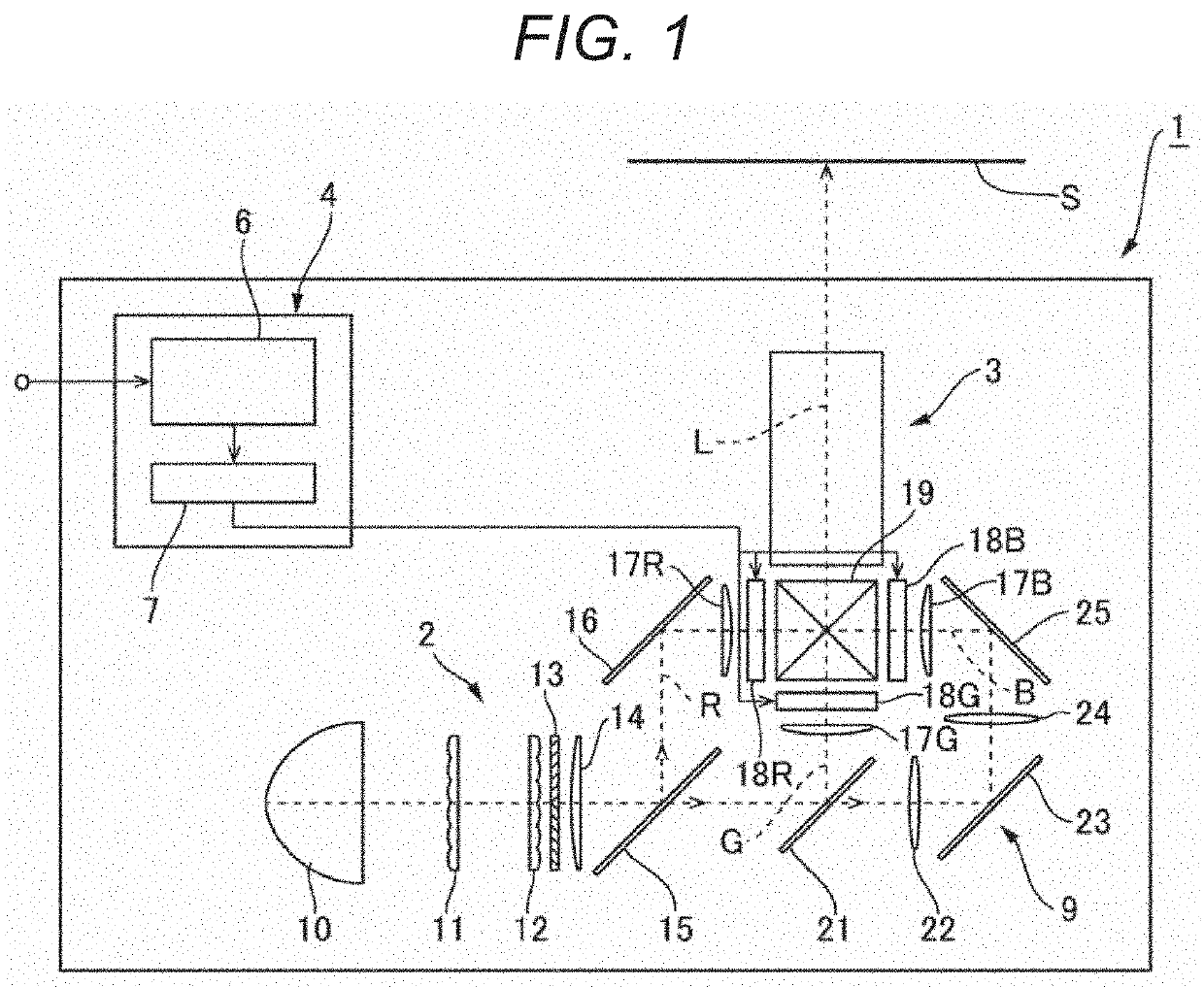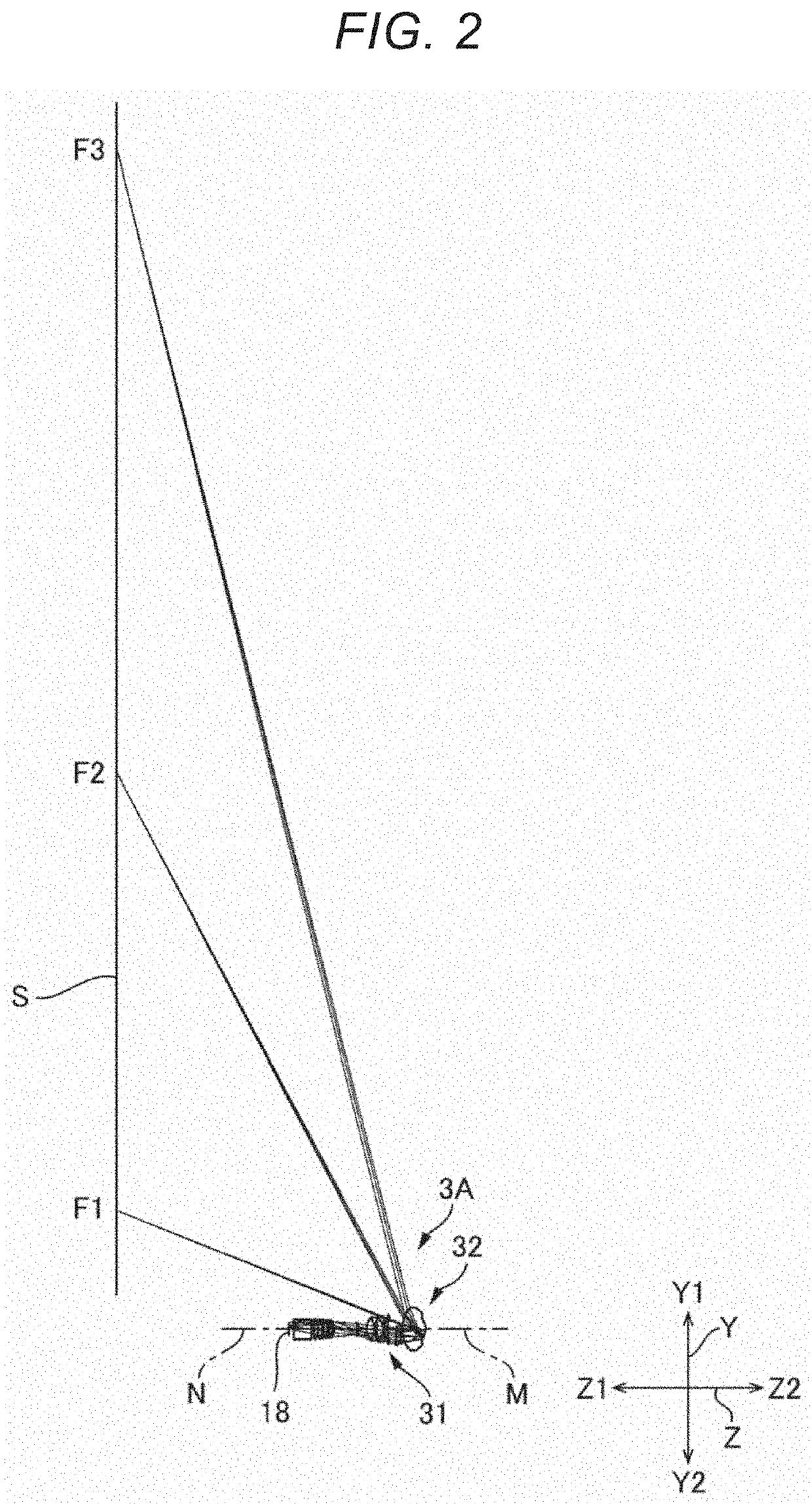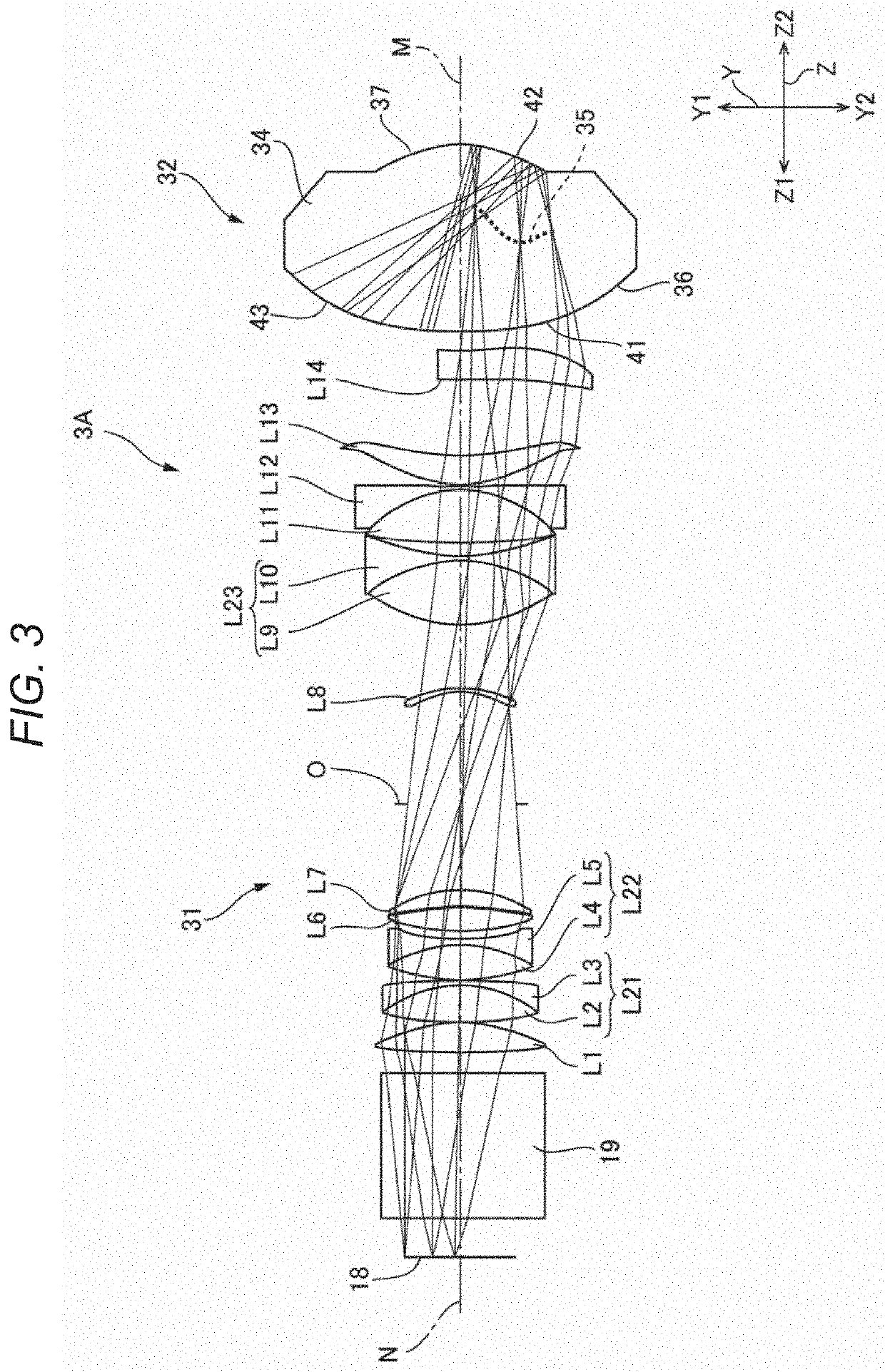Optical system, projector, and imaging apparatus
a technology of optical system and imaging apparatus, which is applied in the direction of projectors, camera body details, instruments, etc., can solve the problems of heavy weight high manufacturing cost of glass optical elements, and insufficient magnification of optical systems, so as to achieve the suppression of manufacturing costs, the effect of easy increase of magnification provided by the optical system
- Summary
- Abstract
- Description
- Claims
- Application Information
AI Technical Summary
Benefits of technology
Problems solved by technology
Method used
Image
Examples
example 1
[0040]FIG. 2 is a beam diagram diagrammatically showing the entire optical system according to Example 1. FIG. 2 diagrammatically shows luminous fluxes F1 to F3, which exit out of an optical system 3A according to the present example and reach the screen S. The luminous flux F1 is a luminous flux that reaches a smallest image height position. The luminous flux F3 is a luminous flux that reaches a largest image height position. The luminous flux F2 is a luminous flux that reaches a position between the position that the luminous flux F1 reaches and the position that the luminous flux F3 reaches. FIG. 3 is a beam diagram of the optical system 3A according to Example 1. FIG. 4 is a beam diagram of the optical system 3A according to Example 1 in a case where FIG. 3 is viewed in the vertical direction. FIG. 5 is a beam diagram showing beams traveling from a lens located in a position closest to the enlargement side in a first optical system to a second optical system.
[0041]The optical sy...
example 2
[0068]FIG. 7 is a beam diagram diagrammatically showing the entire optical system according to Example 2. FIG. 7 diagrammatically shows luminous fluxes F1 to F3, which exit out of an optical system 3B according to the present example and reach the screen S. The luminous flux F1 is a luminous flux that reaches a smallest image height position. The luminous flux F3 is a luminous flux that reaches a largest image height position. The luminous flux F2 is a luminous flux that reaches a position between the position that the luminous flux F1 reaches and the position that the luminous flux F3 reaches. FIG. 8 is a beam diagram of the optical system 3B according to Example 2. FIG. 9 is a beam diagram of the second optical system.
[0069]The optical system 3B according to the present example is formed of a first optical system 31 and a second optical system 32 sequentially arranged from the reduction side toward the enlargement side, as shown in FIG. 8. The second optical system 32 is disposed ...
PUM
| Property | Measurement | Unit |
|---|---|---|
| transmission | aaaaa | aaaaa |
| focal length | aaaaa | aaaaa |
| shape | aaaaa | aaaaa |
Abstract
Description
Claims
Application Information
 Login to View More
Login to View More - R&D
- Intellectual Property
- Life Sciences
- Materials
- Tech Scout
- Unparalleled Data Quality
- Higher Quality Content
- 60% Fewer Hallucinations
Browse by: Latest US Patents, China's latest patents, Technical Efficacy Thesaurus, Application Domain, Technology Topic, Popular Technical Reports.
© 2025 PatSnap. All rights reserved.Legal|Privacy policy|Modern Slavery Act Transparency Statement|Sitemap|About US| Contact US: help@patsnap.com



